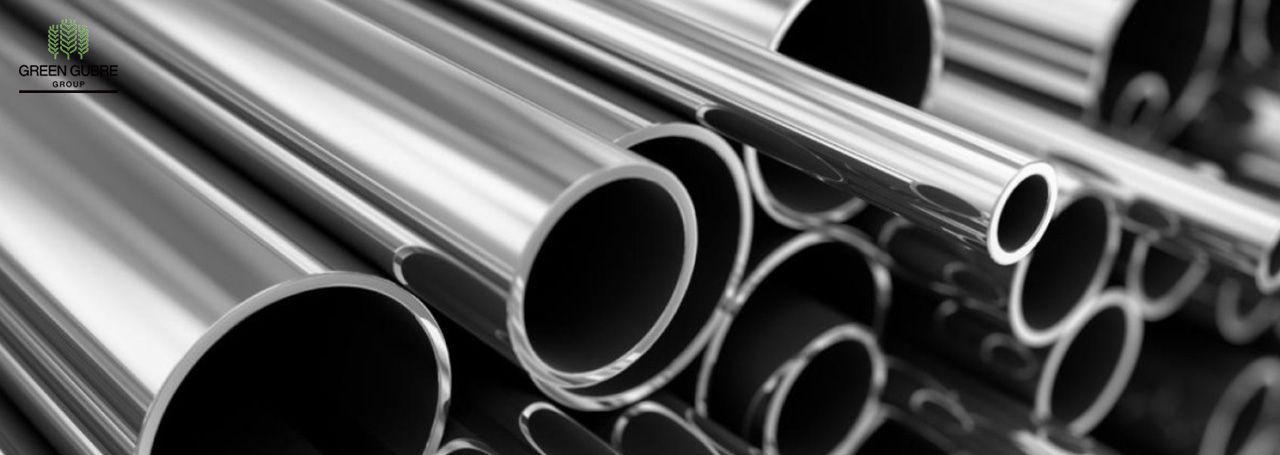The Importance of Stainless Steel in Modern Industry
The Importance of Stainless Steel in Modern Industry

Consumer Goods and Appliances:
From kitchen appliances and cookware to jewelry and watches, stainless steel is a popular choice for consumer goods due to its attractive appearance, resistance to wear, and low maintenance requirements. Its durability and modern look make it a staple in households around the world.
Global Demand for
Stainless Steel:
The global demand for stainless steel continues to grow, driven by its wide range of applications in key industries such as construction, automotive, and medical equipment. As emerging markets invest in infrastructure and industrial development, the need for durable and corrosion-resistant materials like stainless steel is expected to increase. Additionally, as industries move towards more sustainable practices, the recyclability of stainless steel adds to its appeal as an environmentally friendly material.
Future Trends and Innovations:
Stainless steel production is constantly evolving, with new grades and treatments being developed to enhance its properties. For example, advances in alloy stainless steel is a critical material used in a wide range of industries, from construction and automotive to food processing and medical equipment manufacturing. Known for its corrosion resistance, durability, and sleek appearance, stainless steel plays a vital role in modern infrastructure and product design. In this blog, we explore the properties, benefits, and diverse applications of stainless steel, as well as the growing demand for this versatile material.
What is
Stainless Steel?
Stainless steel is an alloy primarily composed of iron, chromium, and carbon, along with other elements such as nickel and molybdenum. The defining feature of stainless steel is its high chromium content (usually at least 10.5%), which forms a thin, protective oxide layer on the surface that prevents rust and corrosion. This self-repairing layer makes stainless steel particularly valuable in applications where exposure to moisture, chemicals, or high temperatures is common.
Types of
Stainless Steel:
1. Austenitic Stainless Steel:
Contains high levels of chromium and nickel, offering excellent corrosion resistance and formability.
Commonly used in kitchen appliances, medical devices, and industrial equipment.
2. Ferritic Stainless Steel:
Contains higher levels of chromium but less nickel than austenitic grades, making it more cost-effective.
Used in automotive components, household appliances, and architectural applications.
3. Martensitic Stainless Steel:
Known for its hardness and strength, this type is commonly used in knives, tools, and turbine blades.
Less corrosion-resistant than other grades but highly durable and heat-resistant.
4. Duplex Stainless Steel:
Combines the properties of austenitic and ferritic stainless steels, offering high strength and superior corrosion resistance.
Used in oil and gas, chemical processing, and marine applications.
Key Benefits of
Stainless Steel:
1. Corrosion Resistance:
One of the primary advantages of stainless steel is its excellent corrosion resistance, making it ideal for environments where exposure to moisture, salt, or chemicals is common. This makes it particularly valuable in marine, food processing, and chemical industries.
2. Strength and Durability:
Stainless steel is known for its high strength-to-weight ratio, providing durability without adding excessive weight. This makes it ideal for structural applications and components that require both strength and lightness, such as in the aerospace and automotive industries.
3. Aesthetic Appeal:
The shiny, sleek appearance of stainless steel adds a modern and professional look to products, making it popular in architectural designs, household appliances, and kitchenware.
4. Hygienic Properties:
Stainless steel’s smooth, non-porous surface makes it easy to clean and sanitize, reducing the risk of bacterial contamination. This is why it is the material of choice in hospitals, laboratories, and food processing plants.
5. Recyclability:
Stainless steel is 100% recyclable, and much of the stainless steel in use today comes from recycled sources. This contributes to the material’s sustainability and reduces the environmental impact of its production.
Applications of
Stainless Steel:
1. Construction and Architecture:
Stainless steel is widely used in construction for cladding, roofing, and structural components due to its corrosion resistance and aesthetic appeal. High-profile buildings, bridges, and monuments often use stainless steel to ensure long-lasting durability and modern design.
2. Food Processing and Medical Equipment:
Stainless steel is the preferred material for kitchen equipment, food processing machinery, and medical devices due to its hygienic properties and ease of cleaning. Surgical instruments, implants, and hospital furniture are often made from stainless steel to prevent contamination and ensure safety.
3. Automotive and Aerospace Industries:
In the automotive and aerospace sectors, stainless steel is used for components that require high strength, corrosion resistance, and heat tolerance. Exhaust systems, engine parts, and aircraft frames often incorporate stainless steel for its durability and lightweight properties.
4. Oil and Gas Industry:
Stainless steel is essential in the oil and gas industry for piping, storage tanks, and offshore platforms, where exposure to harsh environments and chemicals is common. Duplex stainless steel, in particular, is used for its superior strength and resistance to corrosion in these demanding applications.
composition is improving the material’s strength, corrosion resistance, and heat tolerance, making it suitable for even more challenging applications. In addition, surface treatments such as electro-polishing and coating technologies are being used to enhance the appearance and performance of stainless steel products.
Conclusion:
Stainless steel is an indispensable material in modern industry, offering unparalleled corrosion resistance, strength, and versatility. From construction and automotive manufacturing to food processing and medical applications, stainless steel plays a vital role in the production of durable, hygienic, and sustainable products. As global demand continues to grow, stainless steel will remain at the forefront of innovation and development in key sectors worldwide. Discover our range of high-quality stainless-steel products designed to meet the needs of various industries by visiting our dedicated product page.




